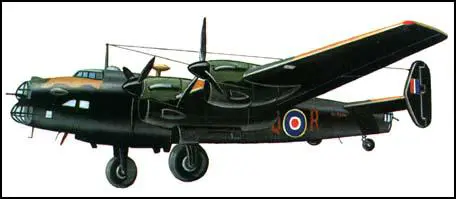Handley Page Halifax
In September 1936 the Air Ministry published specifications calling for a twin-engine bomber to be powered by Rolls Royce engines. Handley Page Ltd took up the challenge and developed the Halifax MK. I. After building several unsuccessful prototypes the final version flew for the first time on 17th August, 1940.
Powered by four Rolls-Royce Merlin engines, it had a maximum speed of 265 mph (426 km) and had a range of 1,860 miles (3,000 km). Armed with six machine-guns it could carry 13,000 lb (5,890 kg) of bombs. It was 70 ft 1 in (21.36 m) long with a wingspan of 98 ft 10 in (30.12 m) and carried a crew of seven.
The more powerful Halifax MK. II appeared in 1941. As well as Handley Page the Halifax was produced by the English Electric Company, the London Aircraft Production Group, Rootes Securities and Fairey Aviation. A total of 2,050 aircraft were manufactured of the Mk. I and Mk. II models.
The Halifax MK. III appeared in 1943. The Rolls Royce engines were replaced by the air-cooled Bristol Hercules radials. It had a maximum speed of 282 mph (454 km) and had a range of 1,077 miles (1,733 km). It was 71 ft 7 in (21.82 m) long with a wingspan of 104ft 2 in (31.75 m).
The Halifax flew 75,532 missions and dropped a total of 227,610 bombs. As a British strategic bomber it was only outperformed during the Second World War by the Avro Lancaster.

